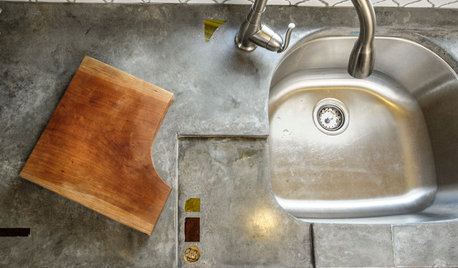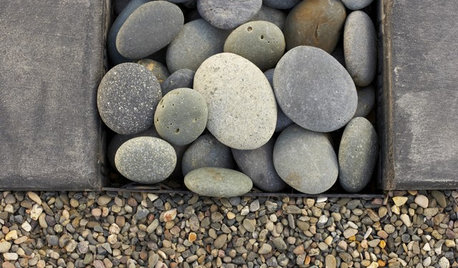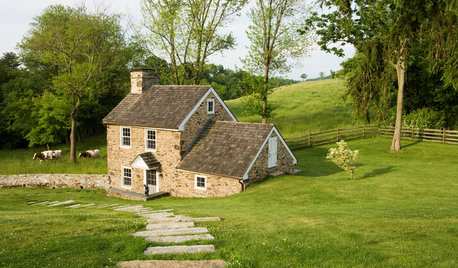rehabbing stone & concrete pond - what next?
kitasei
9 years ago
Related Stories

GARDENING AND LANDSCAPINGHow to Make a Pond
You can make an outdoor fish paradise of your own, for less than you might think. But you'll need this expert design wisdom
Full Story
ARCHITECTUREHouzz Tour: A Pond House in the Arizona Desert
With water in the back and a descent to get in, this skillfully designed modern home keeps its cool in the Southwestern sun
Full Story
KITCHEN COUNTERTOPSCast Concrete Countertops With a Personal Twist
From frame making to pouring to inlays, learn how concrete counters are cast — and how an artisan embellishes them
Full Story
FLOORSKnow Your Flooring: Concrete
Concrete floors have a raw and elegant beauty that can be surprisingly warm
Full Story
LANDSCAPE DESIGNGarden Walls: Pour On the Style With Concrete
There's no end to what you — make that your contractor — can create using this strong and low-maintenance material
Full Story
GARDENING AND LANDSCAPING12 Naturally Beautiful Hot Tubs
Prefer a no-plastic look for your patio or yard? Wood, stone and concrete make these hot tubs fit right in with nature
Full Story
LANDSCAPE DESIGNThe Right Stone for Your Garden Design
Gravel, pebble, cobble and paddle: Stones vary in size and shape, and have different uses in the landscape
Full Story
REMODELING GUIDES9 Hard Questions to Ask When Shopping for Stone
Learn all about stone sizes, cracks, color issues and more so problems don't chip away at your design happiness later
Full Story
LANDSCAPE DESIGNGarden Walls: Dry-Stacked Stone Walls Keep Their Place in the Garden
See an ancient building technique that’s held stone walls together without mortar for centuries
Full Story
BEFORE AND AFTERSRestoration Rallies a 1790 Stone Springhouse
An old outbuilding gets a new purpose — several purposes, that is — thanks to careful efforts by stonemasons and architects
Full Story






kitaseiOriginal Author
waterbug_guy
Related Professionals
Danbury Landscape Architects & Landscape Designers · Cary Landscape Architects & Landscape Designers · Clemson Landscape Architects & Landscape Designers · Rancho Palos Verdes Landscape Architects & Landscape Designers · Roosevelt Landscape Architects & Landscape Designers · Bedford Landscape Contractors · Bergenfield Landscape Contractors · Coeur d'Alene Landscape Contractors · Fishers Landscape Contractors · Fort Payne Landscape Contractors · Munster Landscape Contractors · Tinton Falls Landscape Contractors · Vashon Landscape Contractors · Woodbury Landscape Contractors · Tyngsboro Landscape Contractorsbasilbird
waterbug_guy
kitaseiOriginal Author
waterbug_guy
kitaseiOriginal Author
waterbug_guy
waterbug_guy
kitaseiOriginal Author
waterbug_guy